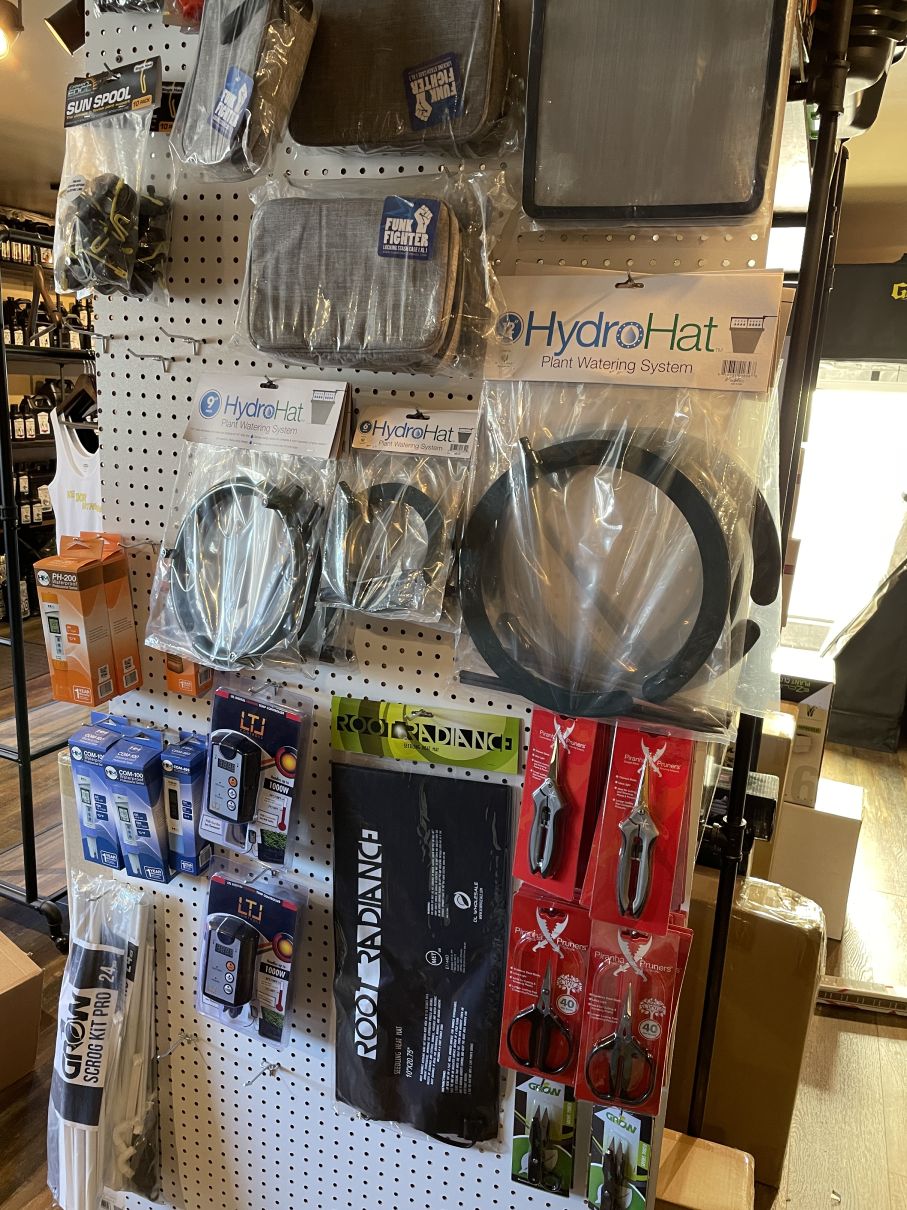Study the Globe of Hydroponics: Discovering Various Kinds
Within the realm of hydroponics lies a varied array of farming techniques that provide special benefits for expanding plants without soil. As we start this expedition of different hydroponic systems, we will certainly reveal the complexities of strategies like the Nutrient Film Technique (NFT), Deep Water Culture (DWC), Wick System, Ups And Downs (Flood and Drainpipe), and Aeroponics. Each technique offers a distinctive method to supporting plants in a soil-less atmosphere, encouraging development and performance in the world of contemporary agriculture.

The Nutrient Movie Method (NFT)
The Nutrient Movie Technique (NFT) is a hydroponic system that involves a continuous flow of nutrient solution over plant origins in a thin film to promote effective nutrient uptake. This technique uses a superficial stream of water which contains liquified nutrients, permitting the plant roots to have constant access to the required components for growth - The Indoor Earthworm. The nutrient solution flows along all-time low of the channel, getting in touch with the origins and after that draining away, supplying an extremely oxygenated setting crucial for origin wellness
Given that the nutrient service is recirculated, it calls for less water compared to traditional soil-based horticulture. Furthermore, the regulated environment of the NFT system reduces the risk of nutrient discrepancies and conditions, leading to much healthier plants.
Deep Water Society (DWC)
In a DWC system, plants are positioned in web pots, allowing their roots to dangle straight into a nutrient option. The secret to success in DWC is preserving the proper oxygen levels in the nutrient service to stop root rot and advertise healthy and balanced plant growth.
Among the primary advantages of DWC is its reduced maintenance demands. With less moving parts and no demand for a complicated watering timetable, DWC is a beginner-friendly choice for those new to hydroponic horticulture. Additionally, the straight access to oxygen and nutrients allows plants to uptake what they need extra efficiently, commonly leading to faster growth rates and greater returns contrasted to traditional dirt farming approaches. Regulating water temperature level and protecting against algae growth in the nutrient option are crucial considerations when executing a DWC system.
Wick System
In hydroponic cultivation, the Wick System is a passive approach that allows plants to attract up vitamins and mineral remedy with capillary activity. This system is straightforward and suitable for novices because of its simpleness. It contains an expanding tray loaded with an inert tool like perlite or vermiculite, where plants are positioned. A wick, typically constructed from materials like cotton or nylon, prolongs from the expanding tray right into a reservoir loaded with the nutrient option. The capillary action of the wick permits the nutrient service to relocate from the storage tank to the growing tray, making sure a constant supply of nutrients to the plants' roots. One of the advantages of the Wick System is its inexpensive and simplicity of setup. However, it might not appropriate for bigger plants or those with high nutrient needs, as the passive nature of the system can lead to uneven nutrient distribution. In general, the Wick System provides a efficient and simple means to practice hydroponic horticulture.
Ebb and Circulation (Flood and Drainpipe)
Exploring the Ebb and Flow (Flooding and Drainpipe) system offers understanding into a dynamic hydroponic strategy that alternates between flooding and draining the plant roots with nutrient service. Get More Information This system operates by occasionally flooding the plant containers with a nutrient option from a storage tank and after that enabling the excess option to drain back. The process is typically managed by a timer to make sure regular flooding cycles, offering the origins with oxygen as the solution recedes.
Ebb and Circulation systems are flexible and can accommodate various plant dimensions and types. The routine flooding assists supply nutrients directly to the roots, improving nutrient uptake efficiency.
This approach is prominent amongst hydroponic fanatics for its versatility, performance, and simpleness to different plant demands. With appropriate tracking and maintenance, the Ups and downs system can support durable plant development in a regulated hydroponic atmosphere.
Aeroponics
Making use of a high-pressure misting system, Aeroponics is an innovative hydroponic approach that suspends plant roots in an oxygen-rich environment to advertise optimal nutrient absorption and vigorous growth. Unlike other hydroponic strategies, which submerge origins in water or a nutrient remedy, Aeroponics delivers nutrients straight to the roots with a great haze. This haze is splashed at regular intervals, making sure that the origins receive a consistent supply of water, oxygen, and nutrients.

Among the vital benefits of Aeroponics is its capacity to maximize nutrient uptake while minimizing water use. By delivering nutrients directly to the roots, plants can absorb them much more effectively, resulting in faster development rates and higher yields. Furthermore, the oxygen-rich setting developed by the misting system stimulates root development and helps avoid root diseases.
Aeroponics is particularly fit for growing leafed environment-friendlies, natural herbs, and other plants that thrive in oxygenated settings. The Indoor Earthworm. Its reliable usage of resources and capability to advertise quick growth make it a prominent selection for hydroponic fanatics aiming to achieve ideal outcomes
Final Thought
In final thought, hydroponics offers a series of ingenious methods for growing plants without dirt. From the nutrient film strategy to deep water culture, each method has its own benefits and obstacles. By comprehending and making use check my source of these different kinds of hydroponic systems, individuals can discover new possibilities for lasting these details farming and make the most of plant development in controlled atmospheres.
